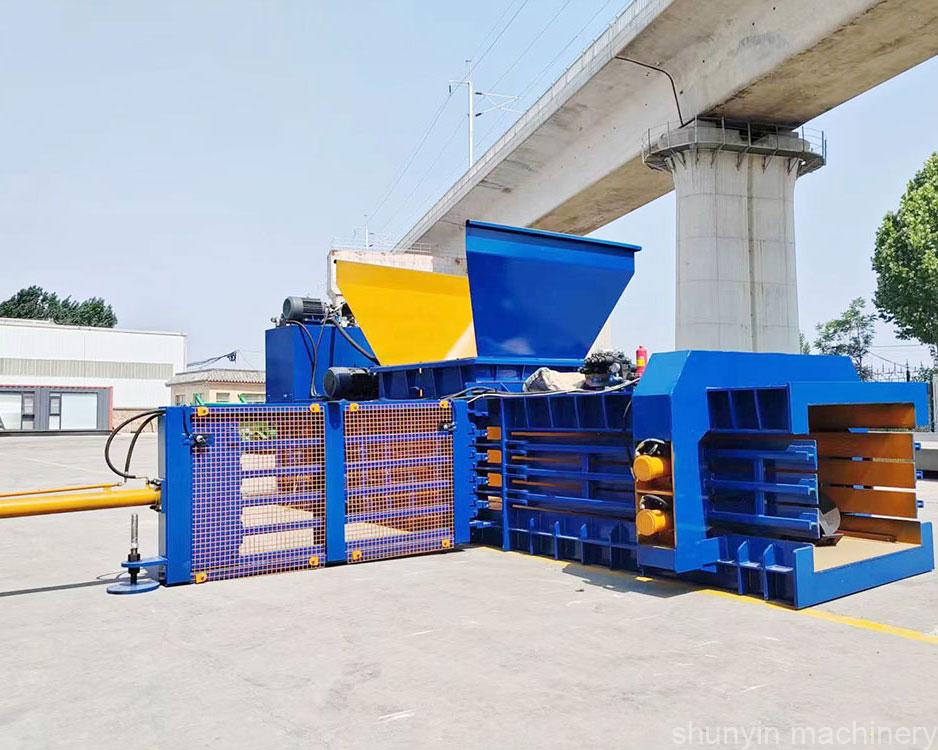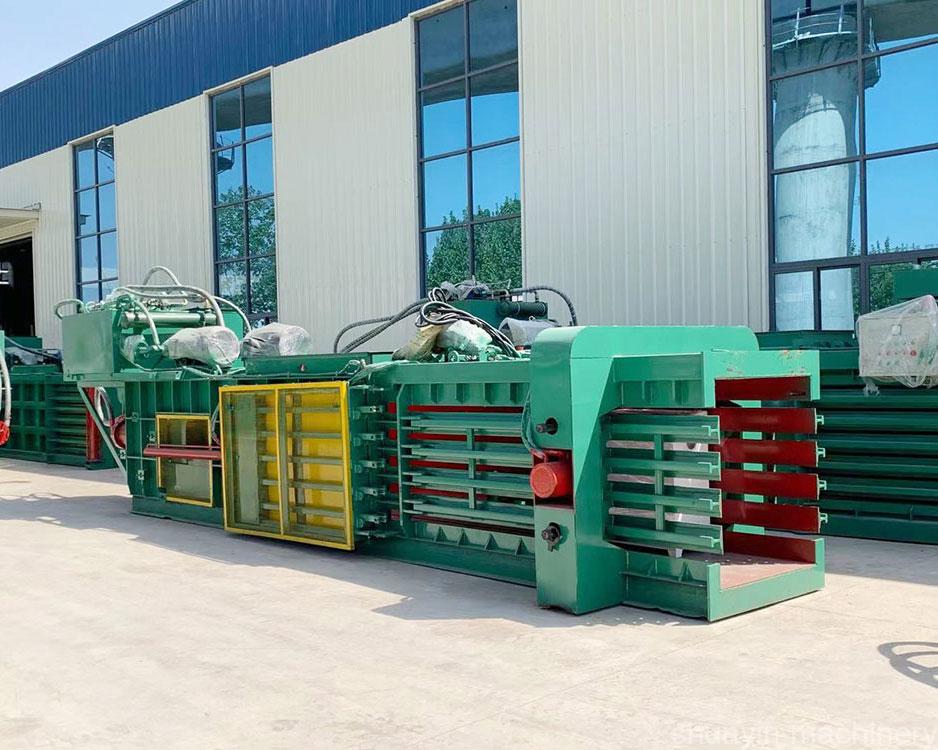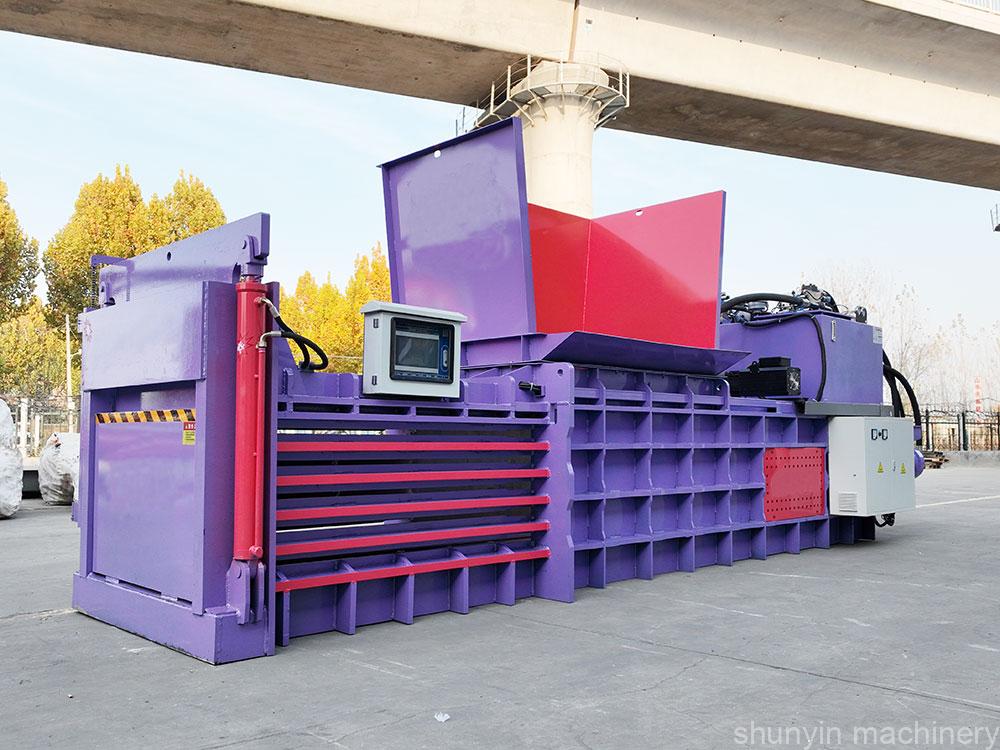
The auto-tie horizontal baler is an essential tool for recycling operations, offering several benefits that improve efficiency and reduce manual labor. Let’s explore how this machine can boost productivity in your business.
Auto-tie horizontal balers offer several benefits:
- Labor savings by automating the tying process.
- Increased efficiency with continuous, automated operation.
- Consistent bale quality for easier handling and transport.
- Improved safety by reducing manual handling.
- Optimized space and transport with compact, neatly tied bales.
- Higher productivity due to faster, automated operations.
In today’s fast-paced recycling world, automation can make a big difference. The auto-tie feature allows businesses to improve output, reduce human error, and handle large volumes of waste more effectively. Let’s take a closer look at why this machine is a game-changer.
What is an automatic baler?
An automatic baler is a machine designed to compress and bundle waste materials, such as cardboard or plastic, into tight bales. The auto-tie feature adds a further layer of efficiency by automatically tying the bales, eliminating the need for manual labor.
Automatic balers save time and reduce labor costs by tying bales automatically. This allows for continuous operation and improved throughput, making them ideal for high-volume environments.

How Automatic Balers Improve Efficiency
- Reduced Labor Costs: The automatic tying system eliminates the need for operators to manually tie each bale, freeing them to focus on other tasks.
- Consistency: The auto-tie mechanism ensures that every bale is tied in the same way, improving consistency and reducing errors.
- Increased Throughput: By automating the tying process, the baler can work continuously, increasing the overall processing capacity of the facility.
Automatic balers are particularly beneficial in environments where large volumes of waste need to be processed quickly, such as recycling centers and warehouses.
What are the benefits of cardboard baler?
Cardboard balers are crucial for compressing large amounts of cardboard waste into manageable bales. The auto-tie horizontal baler offers several key benefits for businesses that handle cardboard recycling.
Cardboard balers help reduce waste volume, save space, and lower transportation costs. The auto-tie feature further improves efficiency by automating the tying process.

Key Benefits of Using a Cardboard Baler
- Space Efficiency: By compacting cardboard into tightly bound bales, businesses can save valuable floor space.
- Cost Savings: The smaller bales reduce transportation costs because more material can fit into a truck, making each trip more cost-effective.
- Environmental Impact: Recycling cardboard reduces the need for new raw materials, helping businesses meet sustainability goals and reduce their carbon footprint.
The auto-tie system enhances these benefits by increasing the speed of the process and ensuring that every bale is neatly tied, ready for storage or transport.
How does a baler tie a knot?
The knot-tying mechanism in an auto-tie baler is automated and uses a series of wires or straps to secure the bales after they have been compacted. The machine feeds the wire or strap through the bale and then ties it using a rotating mechanism.
The auto-tie mechanism feeds and tightens the wire or strap around the bale, securing it in place. This reduces manual labor and ensures a consistent, secure tie every time.

The Tying Process in Detail
- Wire or Strap Feeding: The machine automatically feeds a wire or strap around the compressed material.
- Tightening: Once the wire or strap is in place, the machine tightens it to ensure the bale stays together.
- Securing: After tightening, the baler cuts the wire or strap, securing the bale and preparing it for discharge.
This automated tying process ensures the bales are consistently tight, reducing the risk of material unravelling during transport and storage.
What are some safety tips when using a baler?
Safety is always a priority when operating heavy machinery. While automatic balers reduce manual labor, they still pose potential risks if not used properly. Here are some important safety tips to follow.
Proper training, protective equipment, and regular maintenance are essential for safe baler operation. These steps minimize risks and ensure the machine operates efficiently.

Key Safety Tips for Baler Operation
- Operator Training: Ensure that all operators are fully trained on how to operate the baler and recognize any warning signs of malfunction.
- Protective Gear: Operators should wear appropriate safety gear, including gloves, safety goggles, and steel-toed boots.
- Regular Maintenance: Perform regular maintenance checks to ensure the baler is working properly and safely. This includes checking for any wear and tear on the tying mechanism and hydraulic system.
- Emergency Stops: Familiarize all operators with the emergency stop function to quickly halt the machine in case of an emergency.
By following these safety tips, businesses can ensure that their baler operates smoothly while minimizing the risk of accidents or injuries.
Conclusion
The auto-tie horizontal baler offers significant benefits, from saving time and labor costs to ensuring consistent, high-quality bales. By automating the tying process, businesses can increase efficiency and improve their recycling operations.








